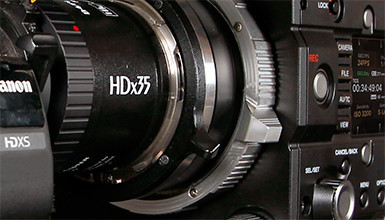It can be easy to forget that digital cinematography technically works the same as digital photography -- just at 24 frames a second (or more). So, what better tool to describe these digital cinema principles than Adobe's Photoshop software. As a staple in the photography community, it is a tool that is widely used and understood. I wrote an article for HD Video Pro magazine about translating digital cinema terms and principles using Photoshop. While it is geared towards photographers, I think many cinematographers will find it revealing as well. Check out the article over at HD Video Pro.

Understanding Digital Cinema Principles Through Photoshop
Tutorials & Guides
At AbelCine we hold a lot of events aimed at helping still photographers move into the world of cinematography or add video to their creative tool kit. These "Stills To Motion" events are focused on the art of cinema, as well as the latest camera technology. At one such event, we discussed the RAW and Log modes in the Canon EOS C500, as well as the wide cinema gamut found in the camera. Many of the photographers in the room weren't as familiar with these concepts and asked that we translate the terminology into something they could better understand.
Related Trainings & Events
YOU MIGHT ALSO LIKE...
Tutorials & Guides
At AbelCine, we often use the term "stills to motion" to describe a still photographer making the transition to cinematography. We've held various events and tours based on this concept, and we've fielded recurring questions around shooting simultaneous stills and video. Many of the shooters we speak to would prefer to focus on either stills or motion, but are often asked by their clients to provide both.
Tutorials & Guides
There are currently many new cameras hitting the market, often with new lens mount types. It comes as no surprise that everyone is trying to determine the best lenses for their new camera system, while others are trying to utilize lenses they already own with a new camera. We all know that lenses often outlive our cameras, so it only makes sense to get the most out of them.
Tutorials & Guides
At the recent LA stop of the VII Evolution Tour, the topic of video compression was brought up in relation to using an external capture device instead of recording internally to the camera.













